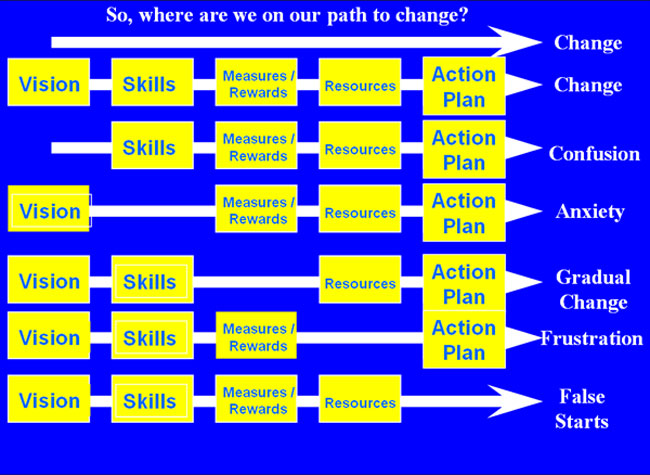Everyone knows how hard "Change Management" is when a company attempts to adopt a new technology or strategy in the supply chain.
In fact, one key development over the past decade is the recognition that the "people" part of the equation is usually the most important of all.
During our excellent four-part videocast series (just completed) on New Ways of Working Together in the Retail-to-Consumer Goods Supply Chain, Procter & Gamble's Jim Flannery emphasized his support for "The Lippitt Model," a change management framework several decades old, first developed by psychologist and academic Gordon Lippitt (now deceased).
It seems just as relevant today, if not more so than at the time of its release. To view the four-part series, go to: New Ways Part 1, Part 2, Part 3, Part 4).

What we (and Flannery) like about the model is not only that it succinctly covers the components needed for effective change (Vision, Skills, Measure/Rewards, Resources and Action Plans), but also lists the specific type of issues that develop if any single one of the factors is missing.
Flannery noted that the middle factors are often not given enough attention, and that giving staff the right training (skills), developing the right incentive systems (rewards), and making sure a project is sufficiently resourced is key to success. He believes both manufacturers and retailers must really look at each of these elements to change the way they do business together, which he says is essential going forward for business improvement on both sides.
We agree, and have often found in new supply chain initiatives that there is a vision and an action plan, but the people side of the change is given far too little attention.
Agree or
disagree? What is your perspective? Let
us know your thoughts at the Feedback button
below.
|